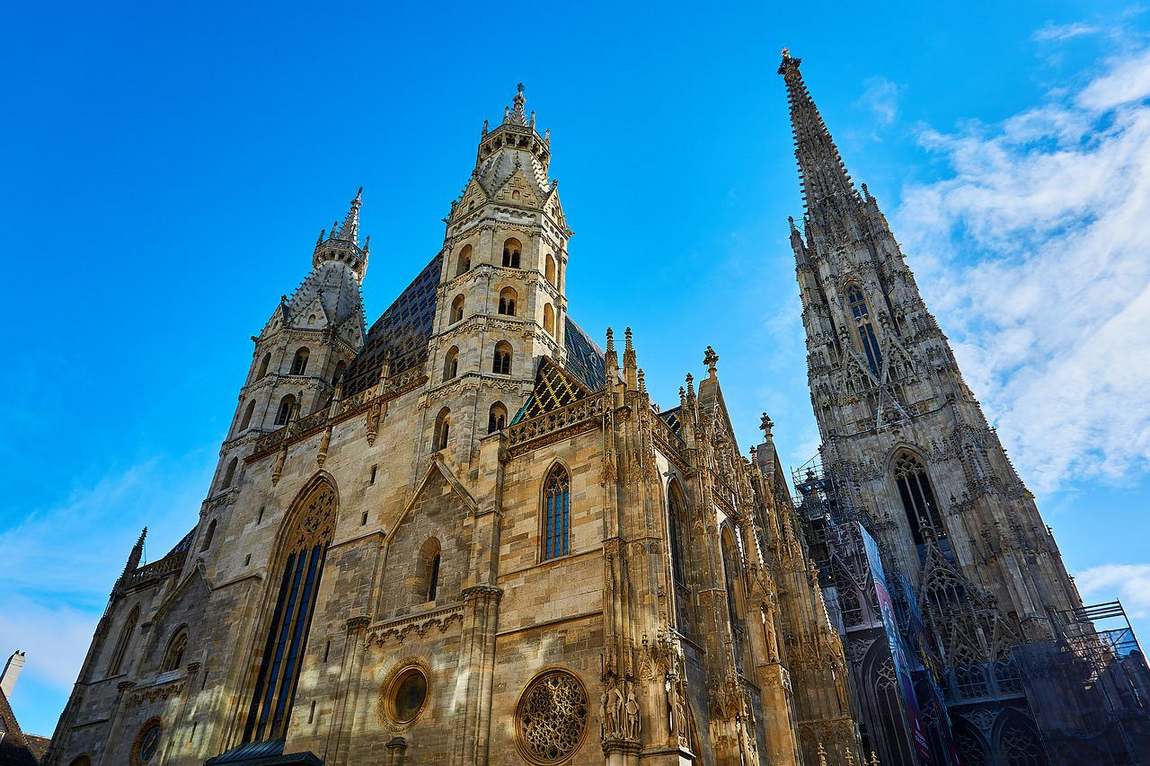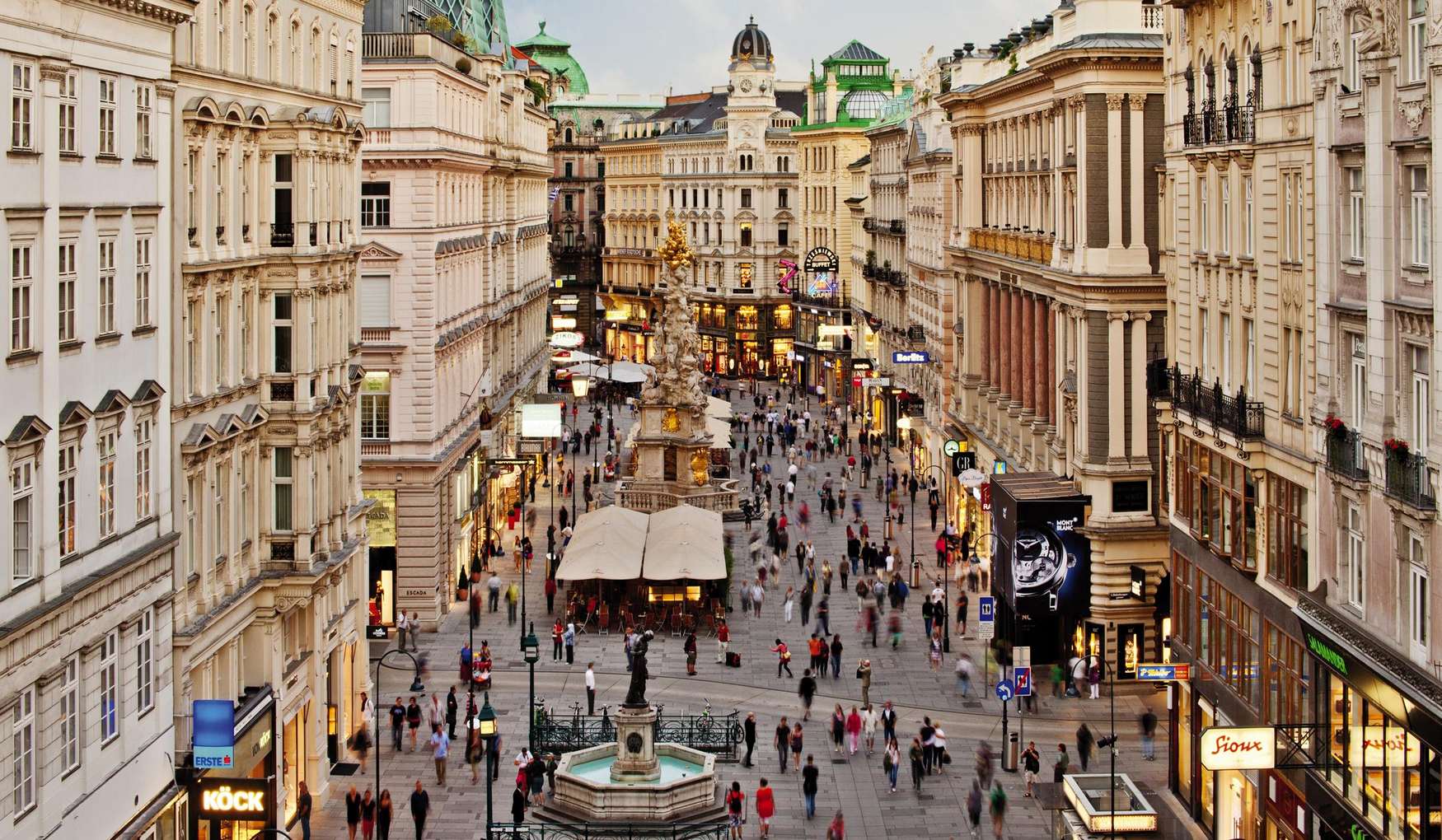For visitors to Vienna, the Grabenstrasse is a must-see. It is a place of contrasts and is also part of the route from the Hofburg to St. Stephen's Cathedral.
There are various shops, souvenir and flower shops, boutiques and cafés on both sides of the pedestrian street. The ones with an open veranda are especially popular with tourists — you can enjoy a drink and watch the passers-by scurry by. But there's one drawback to the area's popularity: it's the most expensive place to relax and spend time.
A family stroll down Vienna's most famous street allows you to admire the architecture, experience the flair of the Austrian capital, and see the permanent and temporary sculptures. The Graben and Vienna are inseparable.
History of the street

Graben Street was built in the Middle Ages on the site of an ancient Roman defence ditch. Incidentally, Graben literally means a "ditch" or hole in the ground. From the 13th century it served as a market square and since 1970 it has been a pedestrian zone in the Austrian capital. The street is pleasantly designed, being an internal thoroughfare with tall buildings on either side and only occasional alleyways on the other.
The street has always been home to the wealthy and today has the highest property prices. The Graben starts at Stock-im-Eisenplatz and continues to Tuchlauben. Sculptures by contemporary artists are often placed at its beginning. Children and adults alike are eagerly photographed around them.
This street is home to monuments that are well known outside the city. Among the landmarks on the street are the Trinity Column (often called the Plague Column), the Fountain of Providence and the city's main cathedrals.
Even the public lavatory on Graben Street can be considered an architectural monument. It was designed in 1905 by the Secessionist architect Adolf Loos, and between the entrances to the ladies' and gents' toilets is St Joseph's Fountain.
The Trinity Column

In the seventeenth century, an epidemic of the plague swept through Europe, which had a major impact on the layout of the city of Vienna. Those who died of the dangerous disease were buried just outside the walls of the cathedrals. In 1679, Emperor Leopold I Habsburg ordered the construction of the Trinity Column on the Graben in gratitude for the city's escape from the plague and as a symbol of protection against similar diseases.
The column was originally made of wood, but was later replaced with a marble replica. The Trinity Column stands in the middle of the street. The first version of the column was dedicated to the Holy Trinity, but the second version changed its appearance by adding extra tiers.
The lower tier is dedicated to the Habsburg Empire, decorated with the coats of arms of the states that were part of the Austro-Hungarian Empire. After the victory over the plague, many European cities began to erect similar symbolic columns, but the Trinity Column in Vienna is the most famous of them all.
St Peter's Cathedral
From Graben Street you can get a good view of St Peter's Cathedral, which was still in use when St Stephen's was being rebuilt. It's tucked away in a small square next to the pedestrianised street.
The current building was rebuilt after a fire and was designed by J.-L. von Hildebrandt in 1702-33. It's interesting for its size and enormous dome, the size of which can best be appreciated from above by climbing the tower of St Stephen's Cathedral.
It is here, in the city's most beautiful church, that the Nativity Exhibition is held in December, a curiosity for tourists and children alike.
The fountains
There are two fountains on Graben Street: Leopoldsbrunnen and Josefsbrunnen. Both were built in the 19th century. Another one is nearby, called the Providence or Donnerbrunnen. It was built in 1739, the design by H.-R. Donner. The main sculpture in the centre is Providence, while the four figures below symbolise the Danube tributaries.
St Stephen's Cathedral

The end of Graben Street is St Stephen's Cathedral, which is simply impossible to pass by. It stands majestically in the square of the same name, leaving tourists in awe and amazement. One is indeed amazed at how beautiful things in this world can be created by man. There is a viewing platform on one of the towers of the cathedral, from where you can see the city and nearby landmarks, including St Peter's Cathedral with its huge dome.
Of course, you can't avoid the shops. Most are boutiques, but there are plenty of souvenir shops. Prices for magnets, pendants and other trinkets are higher than elsewhere in Vienna, but the selection is much wider.
Children can't miss the Josef Kober shop with its collection of teddy bears, and the family can't miss the Lehmann bakery or the local Julius Meinl am Graben shop, renowned for its exquisite gourmet delicacies.
A cheerful, carefree atmosphere, the inviting aromas of local cafés, beautiful architecture and a wealth of sights, luxury, glamour and an air of true Viennese aristocracy - that's one word for it.
Graben is particularly festive at Christmas, with thousands of lights and ornaments, and beautifully decorated shop windows.
It's a street that has a lot to tell a visitor, and whether you're an adult or a child, you won't be disappointed. Whether you opt for a simple stroll and sightseeing or relax with a cup of coffee in one of the cafes, you're sure to look back on your time here with nostalgia.











